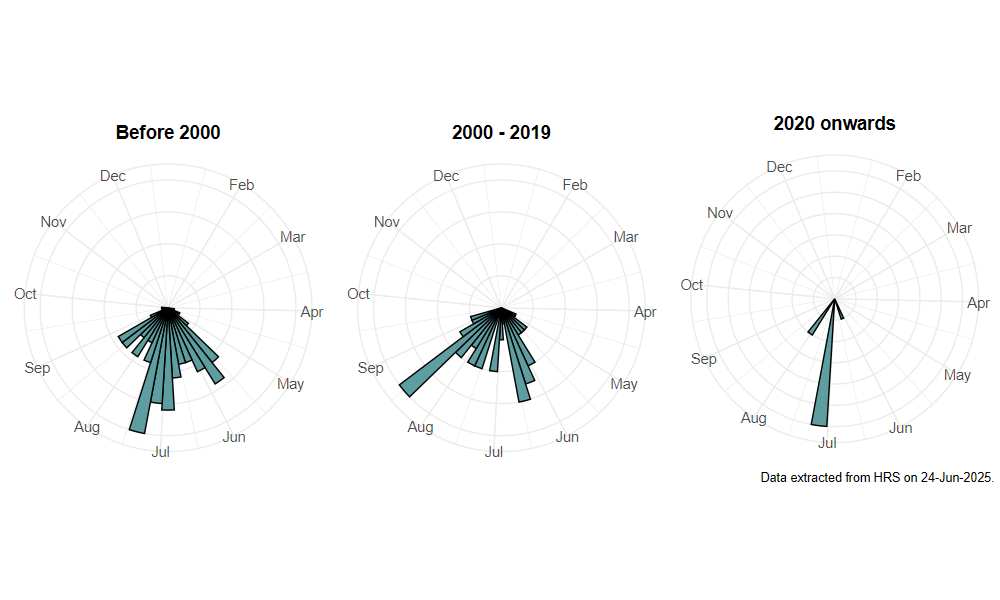Xylota tarda Meigen, 1822
Identification
Identification difficulty = 4. ![]()
![]() according to Ball & Morris, 20241
according to Ball & Morris, 20241
Biology
The larva has been found in sap runs near the base of Aspen Populus tremula. They are usually found in damp situations in woodland, at the edges of wet woodland, or near streams, but nearly always where over-mature trees are present. Adults run rapidly over sun-lit foliage of bushes and trees or bask on stumps and bare ground. Rarely visits flowers.
Flight period
The following plots show the number of unique records per week excluding those reported to be of immature stages.

Status
Lower Risk (Nationally scarce) - Ball & Morris, 20142. Notable - Falk, 19913.
Distribution
A scarce species that is mainly found in the Midlands and southern-central England, but with scattered records north to the Scottish Highlands where it is evidently relatively widely distributed.

Trends
The following plots show the Frescalo TFactor vs year and a map of the rescaled frequency (all records) for the species.
-
Ball, S., & Morris, R. (2024). Hoverflies of Britain and Ireland. WILDGuides (3rd ed.). Oxford: Princeton University Press. ↩
-
Ball, S., & Morris, R. (2014). A review of the scarce and threatened flies of Great Britain. Part 6: Syrphidae. ( No. 9). Species status (pp. 1–130). Peterborough: JNCC. ↩
-
Falk, S. (1991). A review of the scarce and threatened flies of Great Britain. ( No. 39). Research and Survey in Nature Conservation (pp. 1–194). Peterborough: NCC. ↩